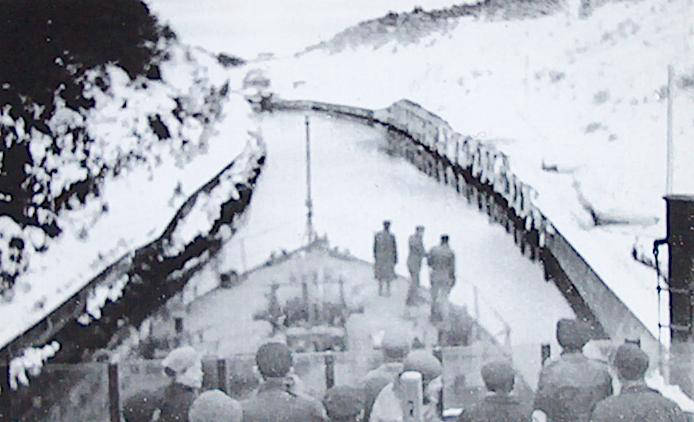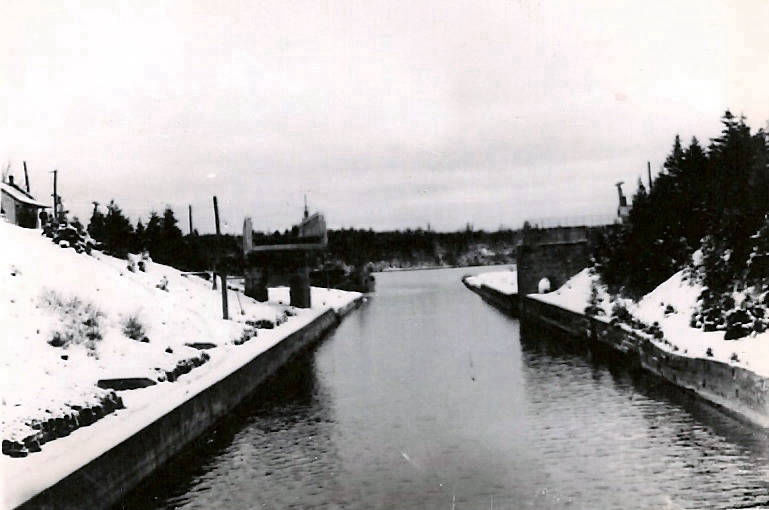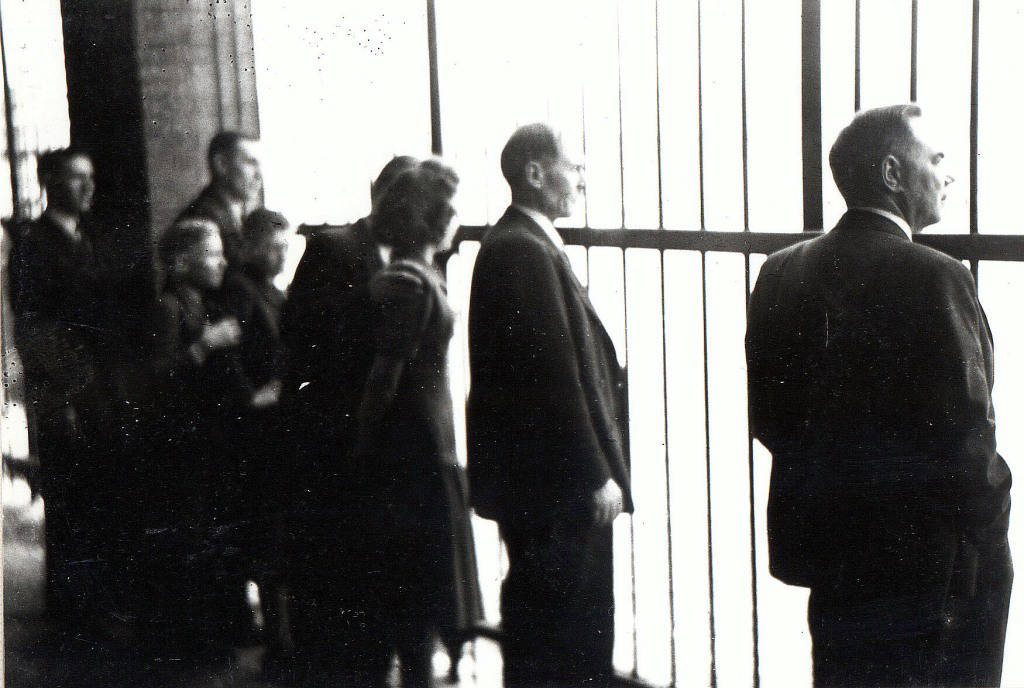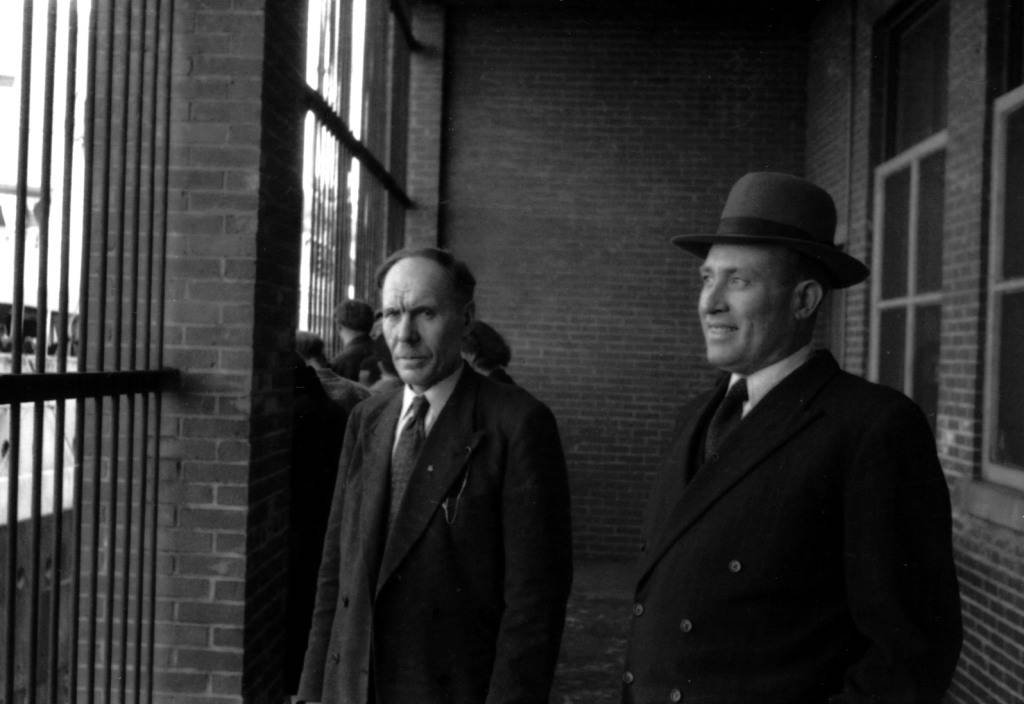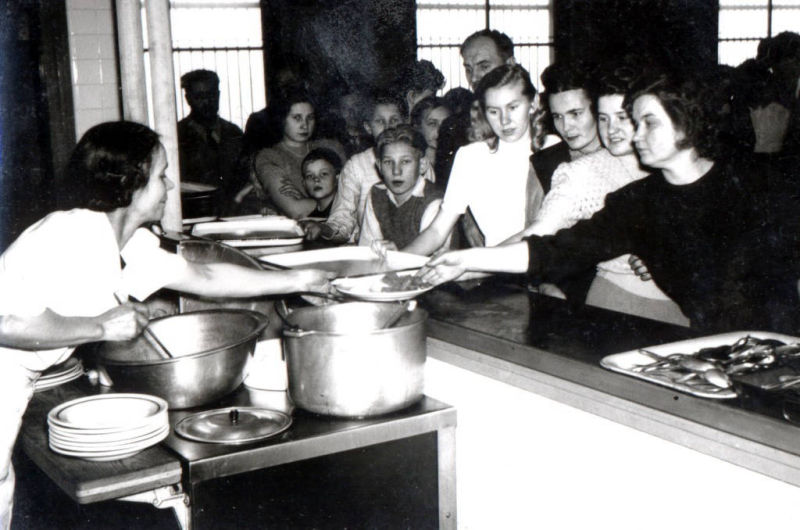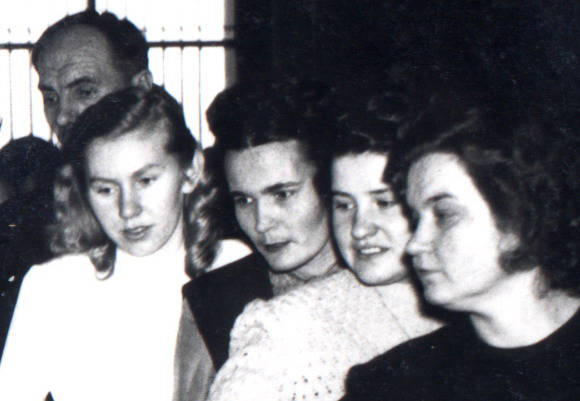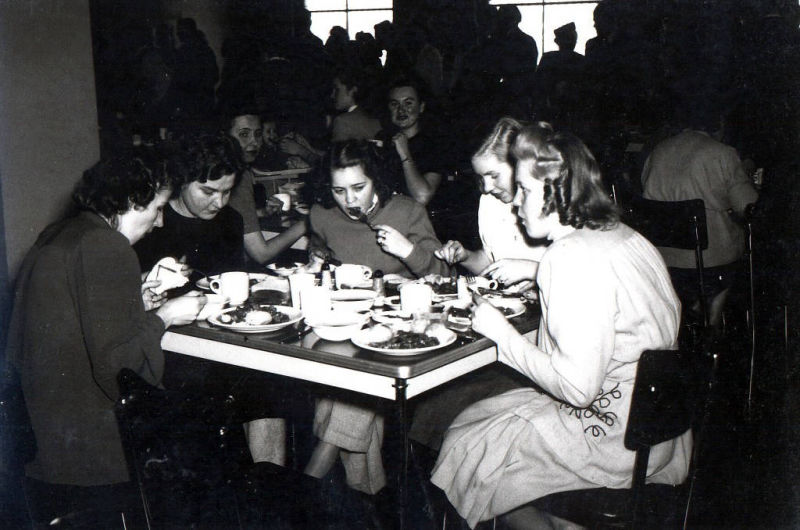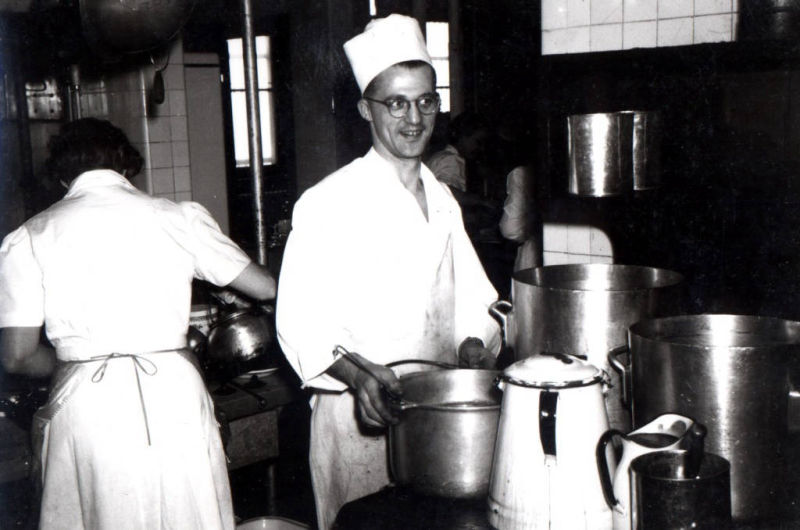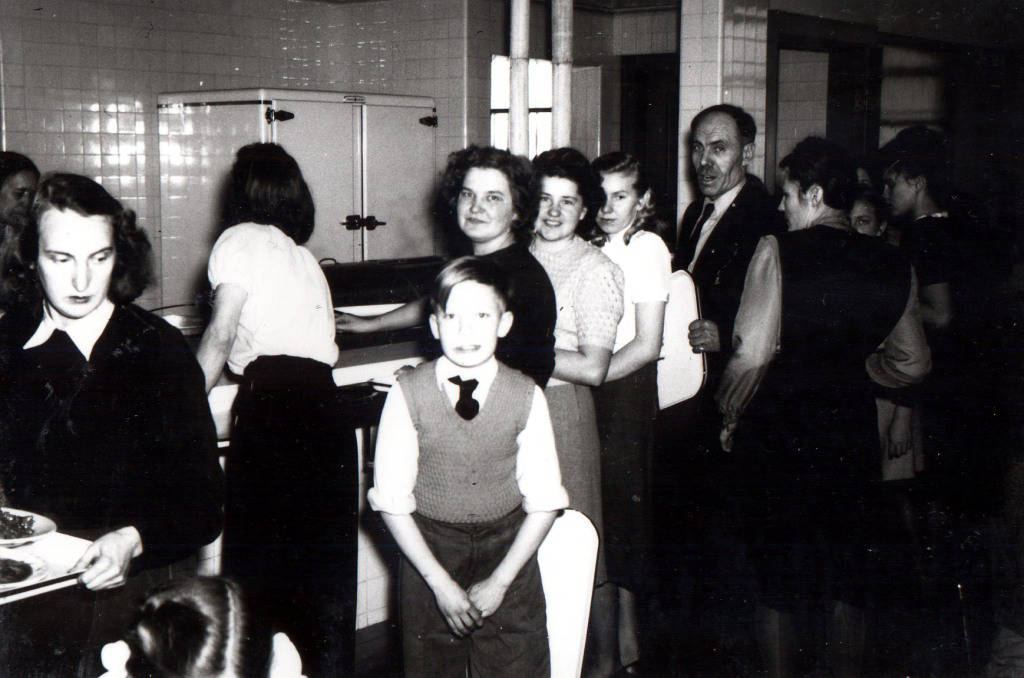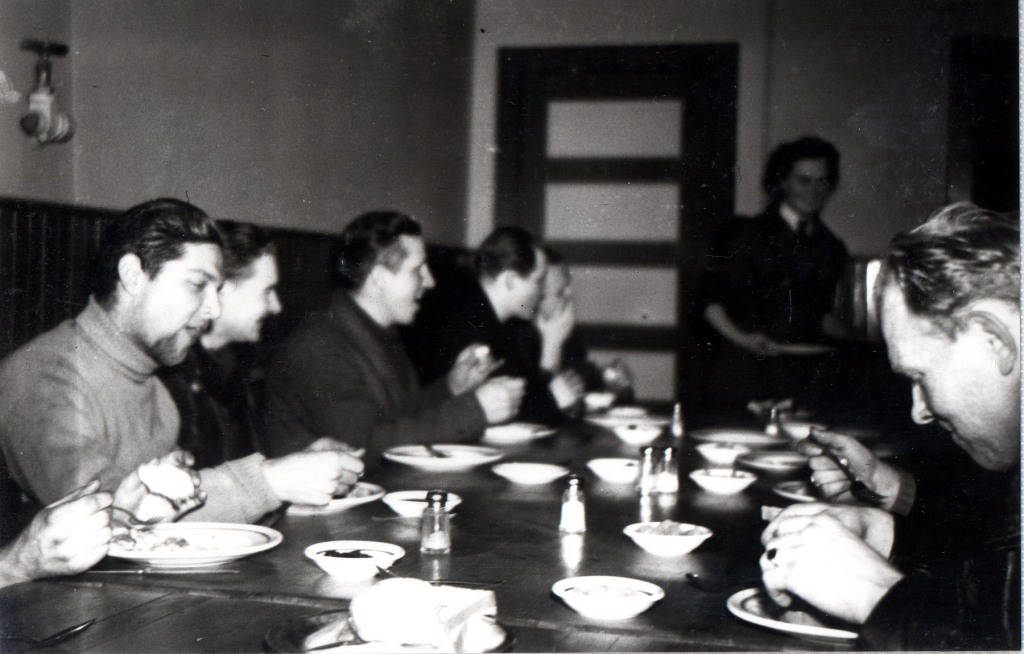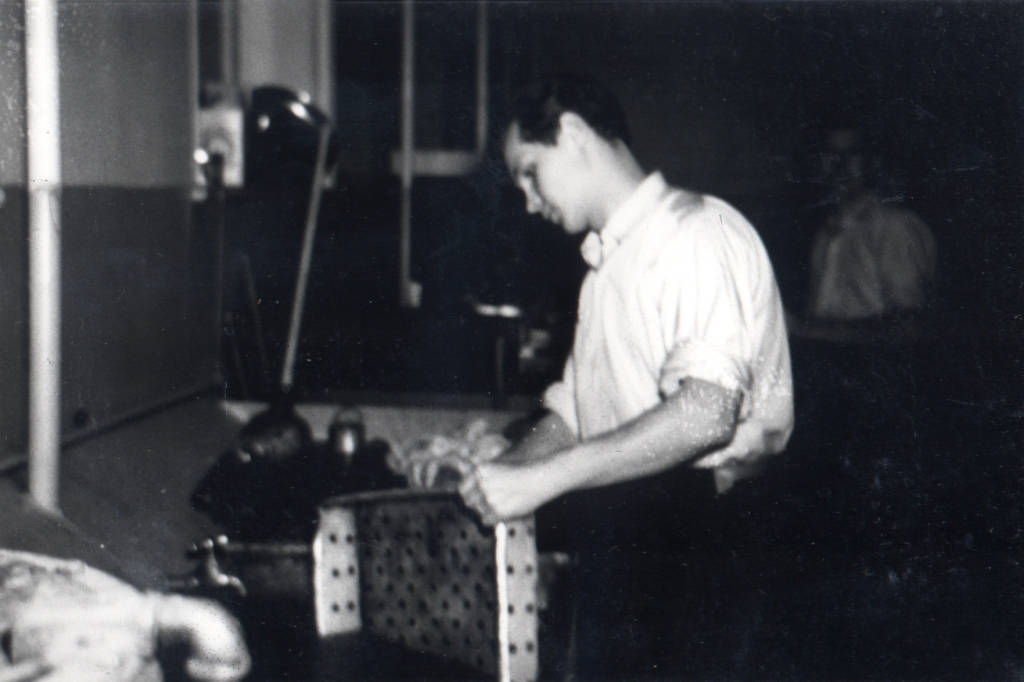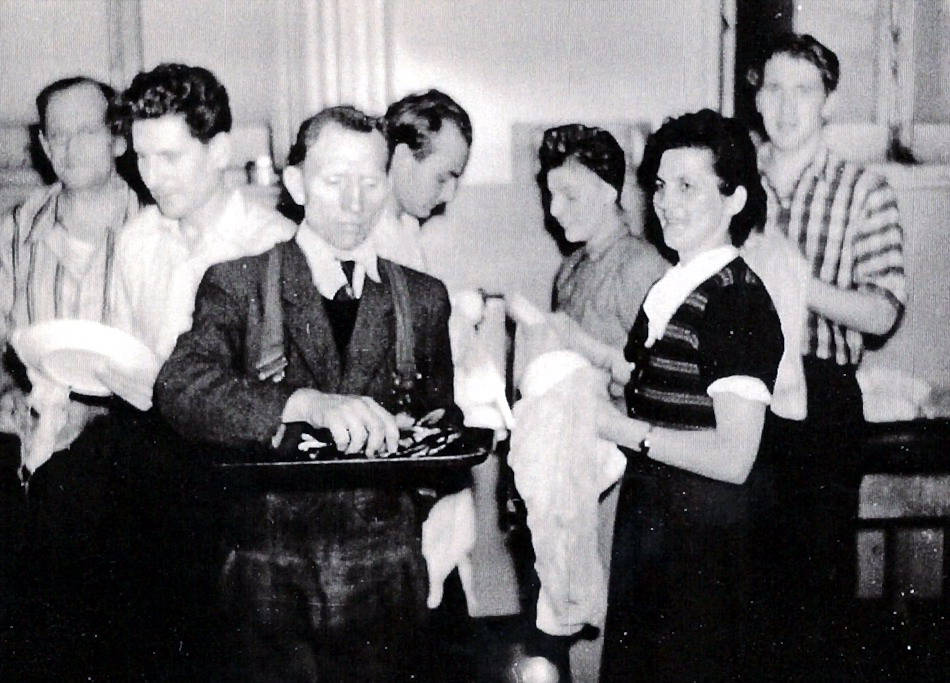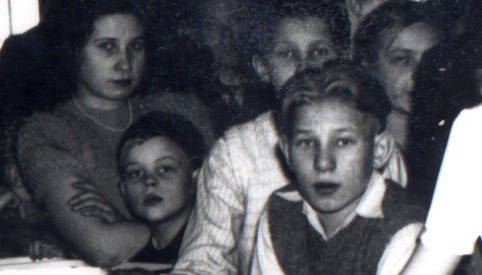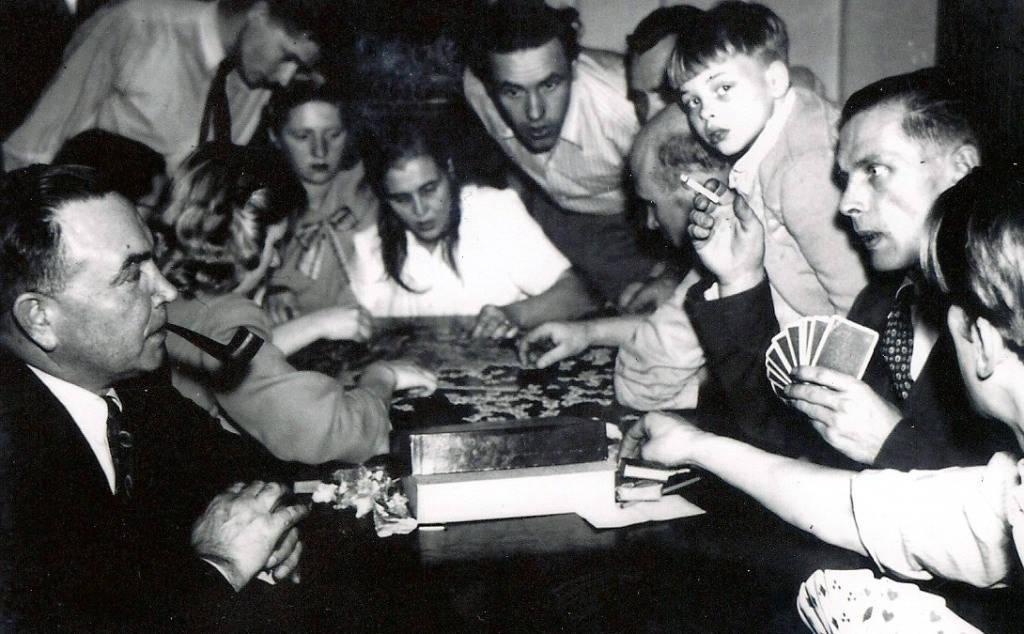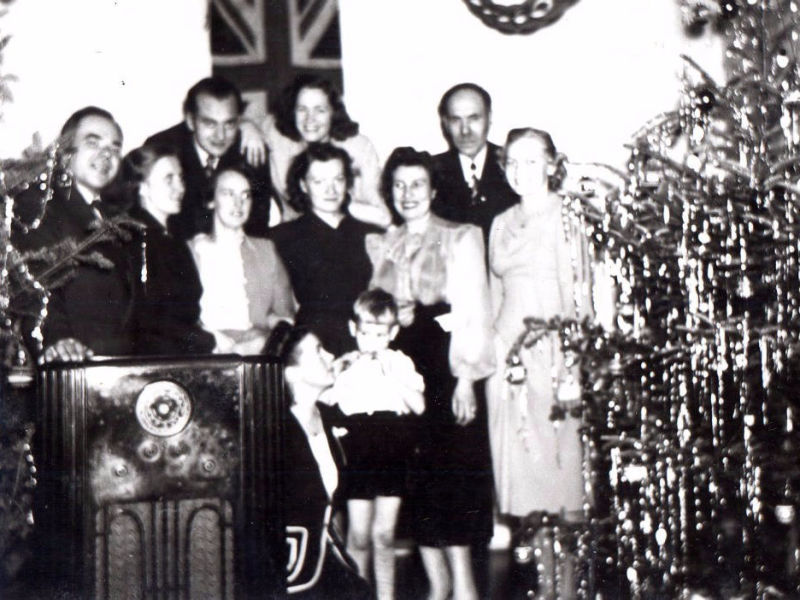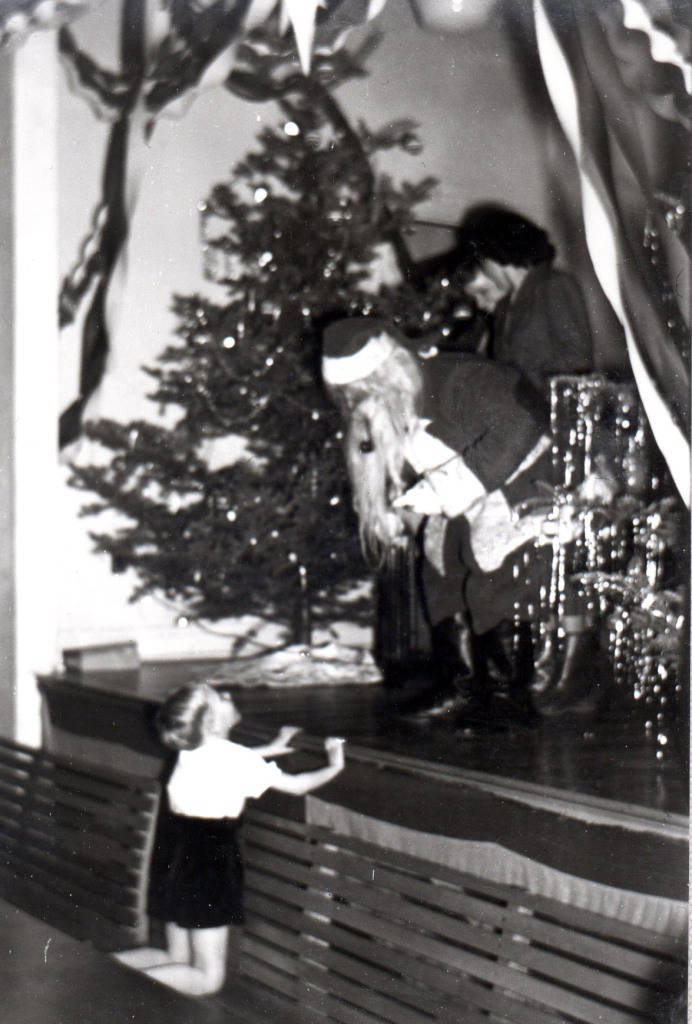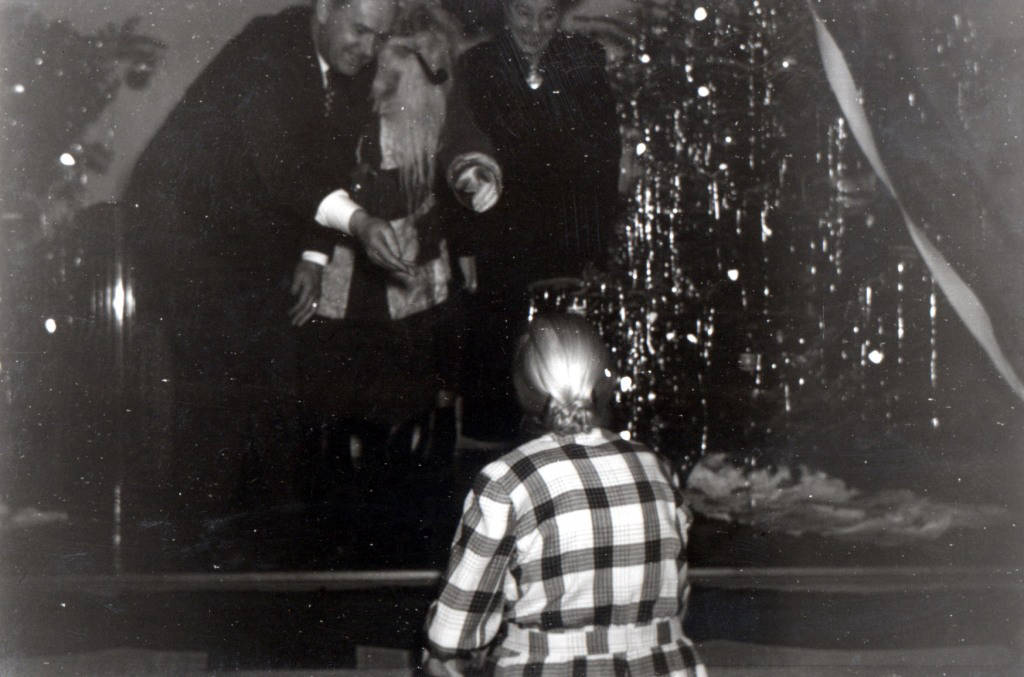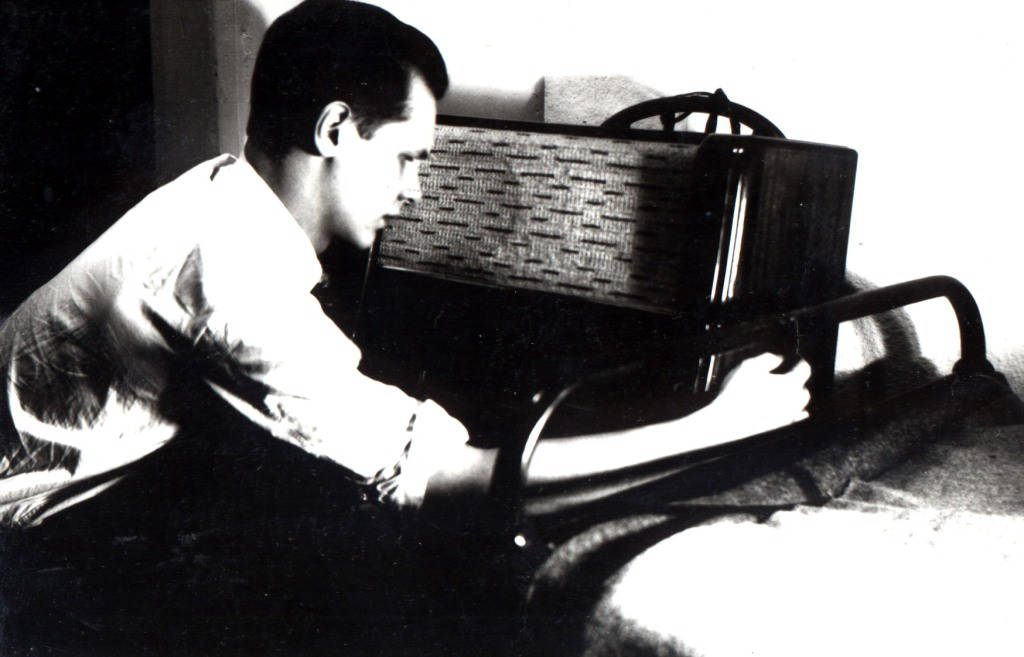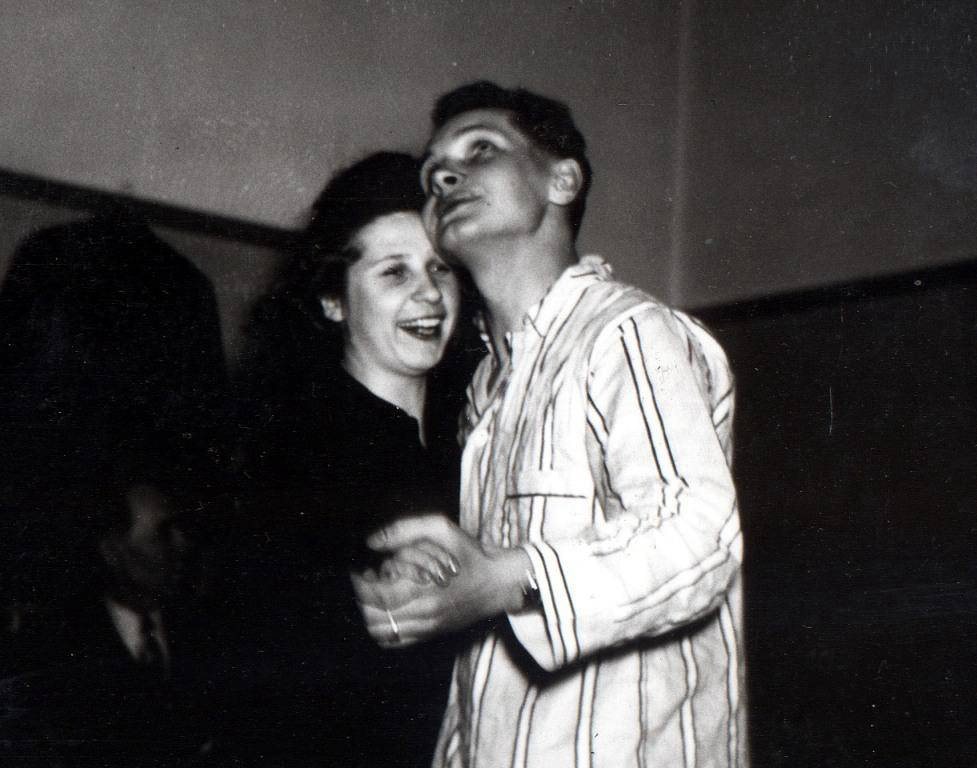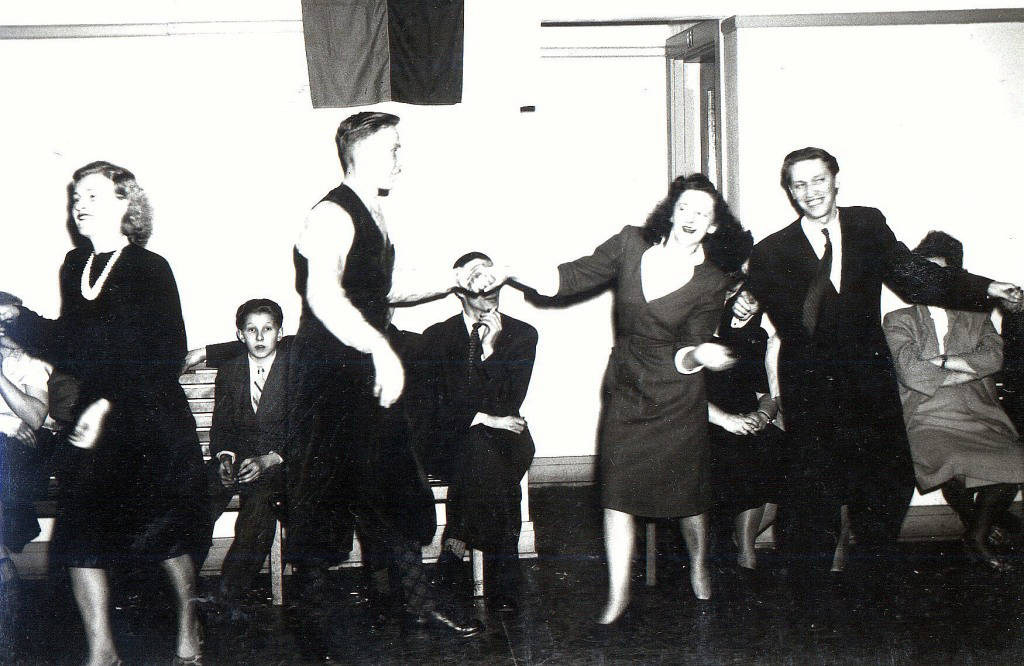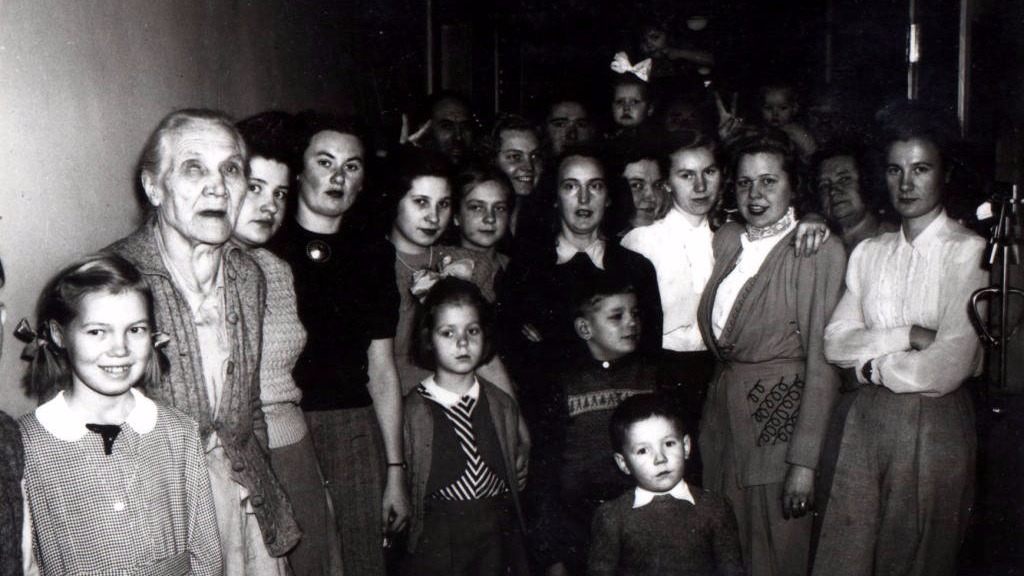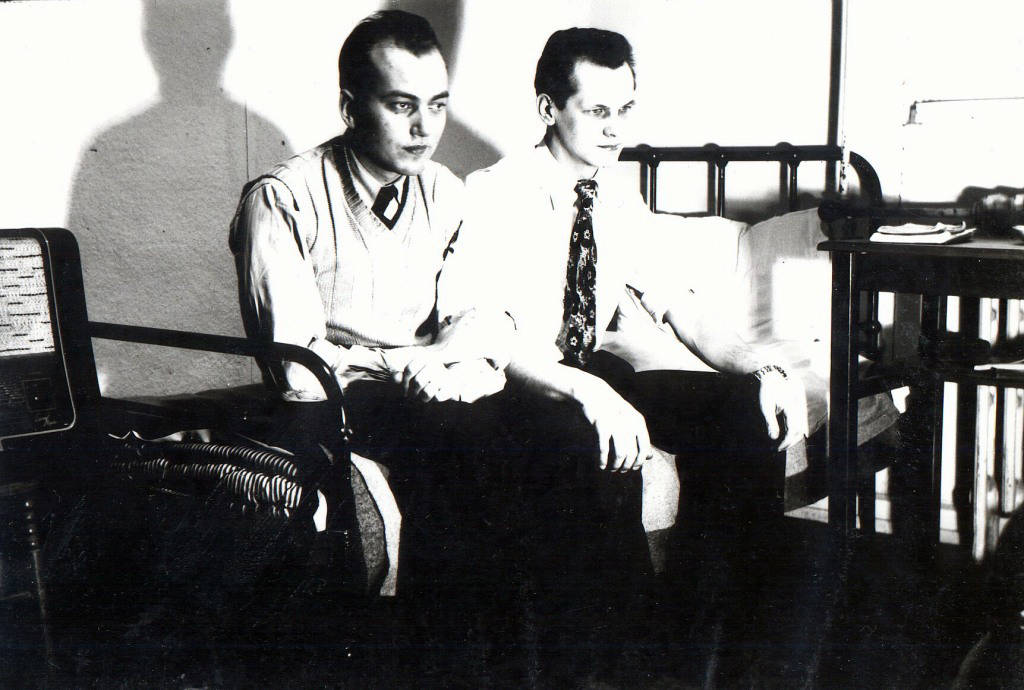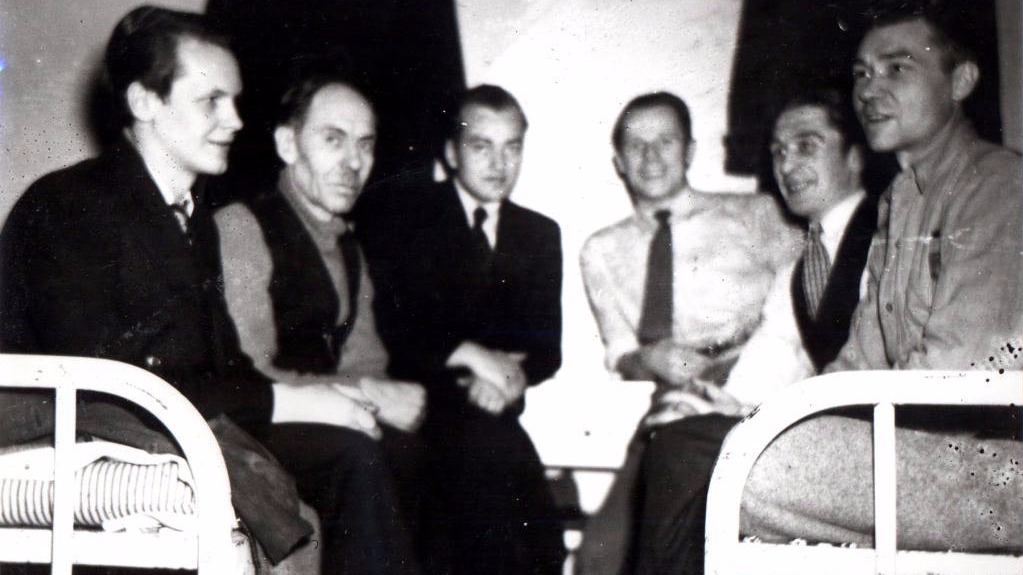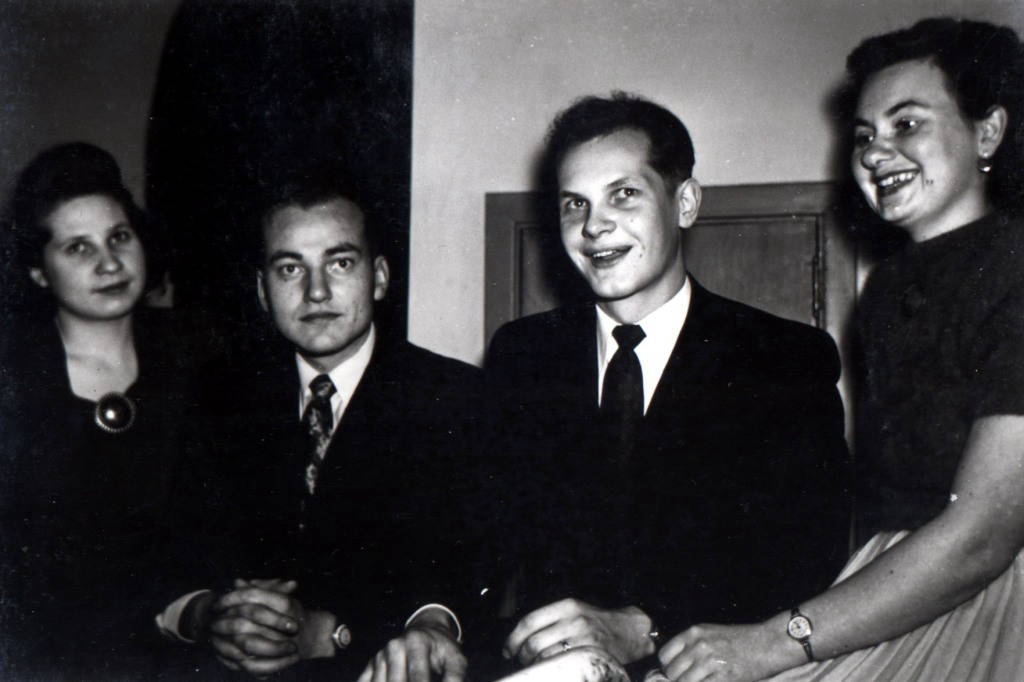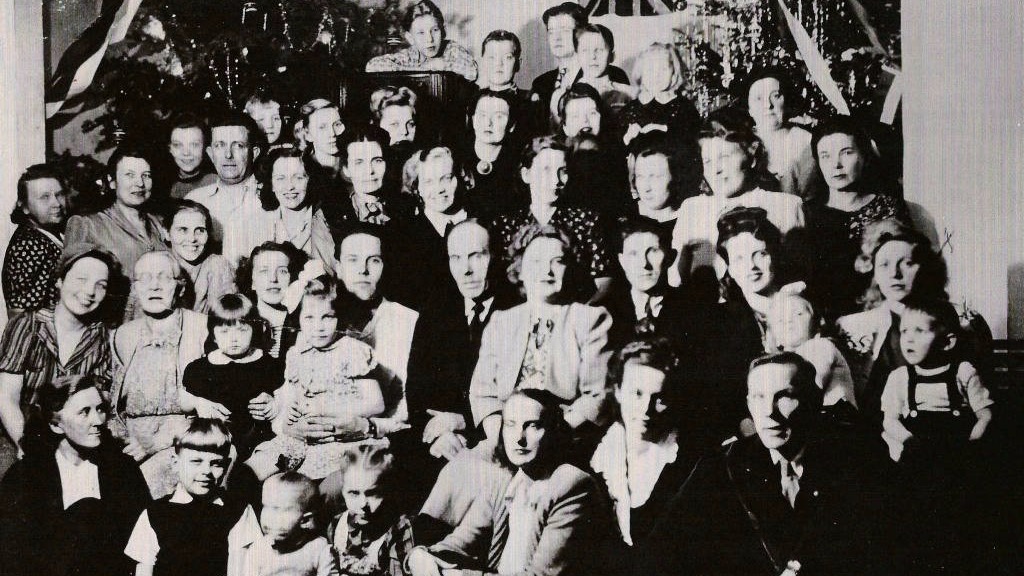Friday, December 10th -
Excerpt from "Footprints of Uprooted Lives" - Author Tiiu Roiser (2017)
“Land! I can see land!” someone yelled in excitement. The word spread quickly and soon most of the Walnut’s passengers were crowded on the deck, standing shoulder to shoulder. The adults were holding their children high above their heads staring towards the horizon, searching for a glimpse of terra firma. The land they had spotted was Cape Breton island off the Atlantic coast of Canada, part of the province of Nova Scotia. Riding the Labrador ocean current, the ship made its way towards Spanish Bay moving inland past the small coal mining town of Sydney Mines. The ten-mile-long inlet led them past low rolling hills and into North Sydney harbour. They were now officially in Canadian territory!
What had been jubilation at finally arriving at their destination, quickly turned to surprise and disbelief. The Captain was told that they could not land here and disembark, they would have to move on. Although North Sydney had been a major shipbuilding centre in the early nineteenth century, its port could not accept a ship like the Walnut, filled with immigrants. There was simply no place that was adequate to receive the newcomers. They were told that they would be helped to refuel, but that they would have to return to the water and continue to Nova Scotia’s capital, Halifax. Canadian immigration would be waiting for them there.
On December 11th, the first snowflakes lazily drifted from the sky, nothing of concern. But soon, the winds grew. Sitting in North Sydney harbour, the Walnut found herself in the midst of a heavy winter snow storm. It was far too dangerous to leave. They’d have to stay and wait for the storm to pass.
The people in Sydney were curious about the small rusty ship that had arrived at their port. They were curious about what sort of people had landed at their doorstep. Kind locals brought meat, bread, milk and chocolate for those on board. Reporters were snapping photographs and scribbling notes about the amazing courage and strong will exhibited by those eager to find a new homeland. They were calling the passengers the Northern Vikings.
By the morning of December 12th, the weather had settled enough that it was safe to consider leaving. Waving goodbye to the residents of Sydney, the Walnut was escorted by a pilot boat that took the ship back out of Sydney harbour and into an inland waterway, heading toward Halifax.
The ship was now moving along the Bras d’Or Lake system which runs through the centre of Cape Breton Island. This water system was like a lake within an island, that was within the sea. The scenery was picturesque, rolling hills covered with trees. There was an occasional small farm along the shore. Here and there, jagged outcroppings of rocks could be seen along the waterline. Not like a lake at all, it was more like a series of channels that seemed to have been scraped into the countryside, like the remnant scratchings of a giant cat. The ship slowly made her way through channels, bays, basins and inlets. It was hard to tell which land masses were part of the big island and which were smaller separate islands. The ship wound its way past Carter’s Cove, around Beaver Island, through Beaver Narrows and past Helens, Dicks and Handley’s Islands. It finally arrived at St. Peter’s inlet and made its way into St. Peters Canal.
The 2,600-foot-long man-made water channel was built on an isthmus and had been carved into sixty-foot hills of solid granite. It connected St. Peters Inlet of Bras d’Or Lake to the north, with St. Peters Bay on the Atlantic Ocean, to the south. The canal had a unique system of double gates designed to compensate for the tidal differences between the lake and the ocean. The Walnut passengers crowded onto the deck and stood beside the ship’s railings taking in the sight of the ship slowly making its way through the canal. Fresh snow covered the landscape.
“Bears!” someone shouted, “look there are bears!”
“Bears?” another questioned. “What are you talking about?”
“Black and white bears,” they repeated, pointing towards some animals standing on the shore.
The announcement of bears alongside the canal was met with a rush of passengers moving from one side of the ship to the other. Everyone was eager to catch a glimpse of Canada’s wild inhabitants. The sudden movement caused the ship to tilt.
“Don’t all stand on one side,” roared the Captain. They were, after all, moving through a very narrow canal.
The “bears” were not large heavy mammals Ursidae of the order Carnivora at all. They were instead, black and white dairy cows that were milling about hunting for grass. Estonians were not used to seeing cows outside in the winter and had mistaken the identity of the creatures before them.
The canal’s lock system opened and the ship rose from one water level to the next. Sitting in his little white house, the Lockmaster swung open the iron swing bridge allowing the ship to pass. Once again, the open Atlantic Ocean beckoned them. They sailed south towards Halifax.
They reached their final destination at noon on December 13th. It was St. Lucia day. Having become accustomed to Swedish traditions, the special meaning of landing in Halifax on this day was not lost on the passengers. It was on this day that St. Lucia is celebrated by Swedes. Wearing a crown of lighted candles, she brings faith, hope and a reason to believe in good things to come.
Newspapers in Halifax had heard about the ship on its way and had already reported on the Walnut’s imminent arrival. Passengers were readying themselves for landing. Some were polishing shoes, changing their clothes, others shaving.
Knowing that almost all were arriving illegally, the passengers awaited with baited breath. What would their reception by immigration be like?
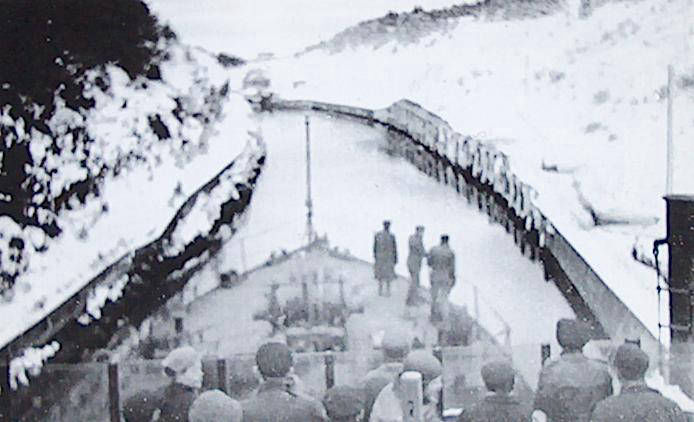 Travelling through St. Peter's Canal.
Travelling through St. Peter's Canal.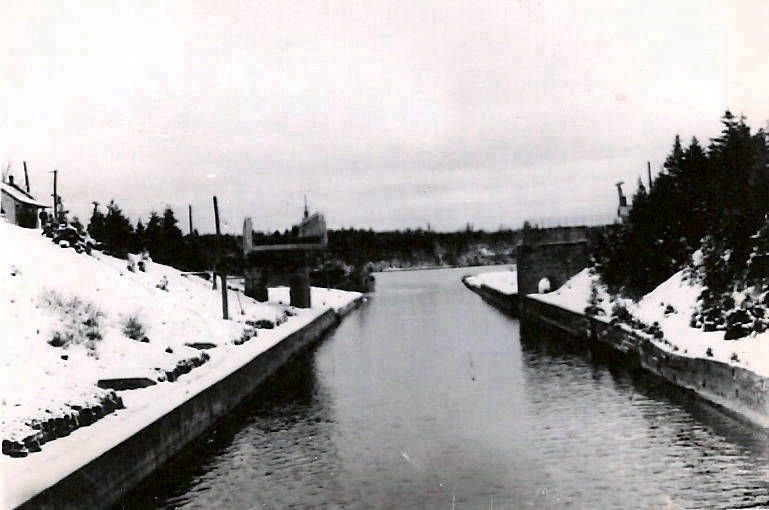 St. Peter's Canal.
St. Peter's Canal.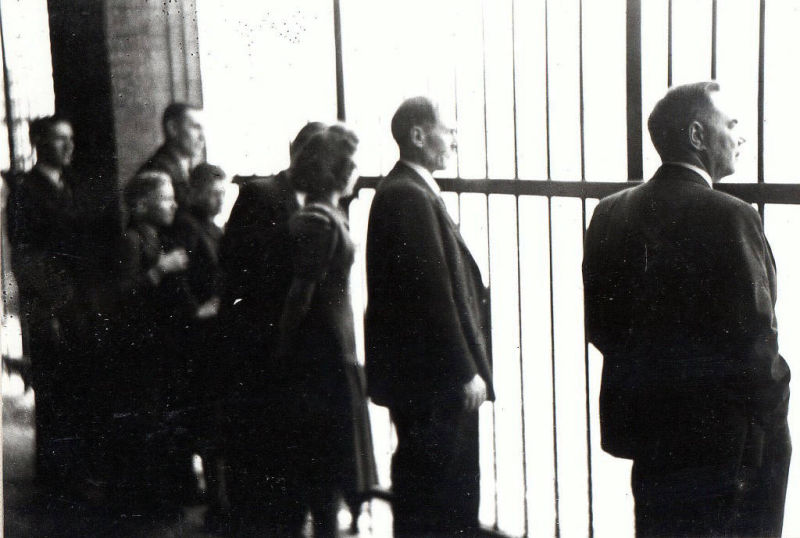 At Pier 21, looking towards the oean and the docked Walnut ship.
At Pier 21, looking towards the oean and the docked Walnut ship.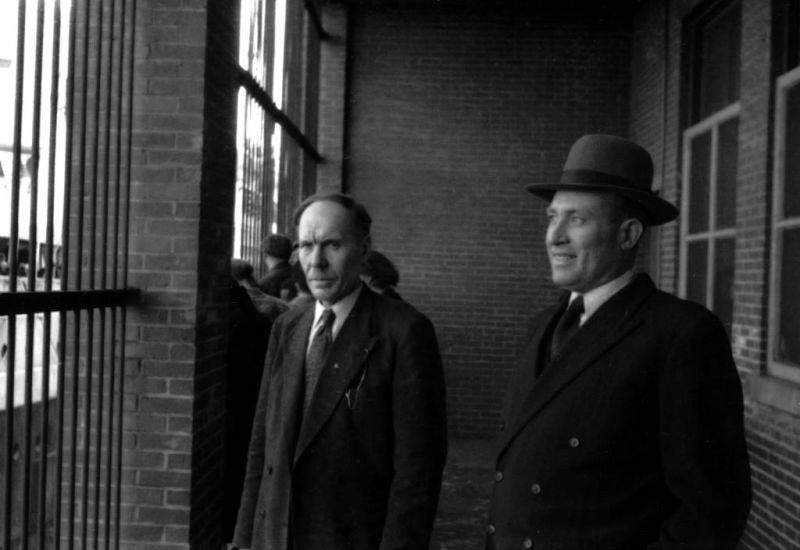 Right: Herbert Madrus
Right: Herbert Madrus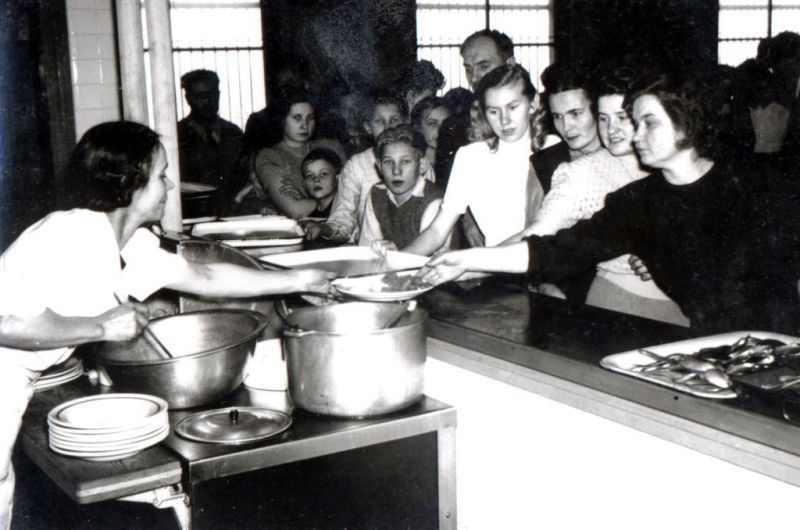 Luncheon line.
Luncheon line.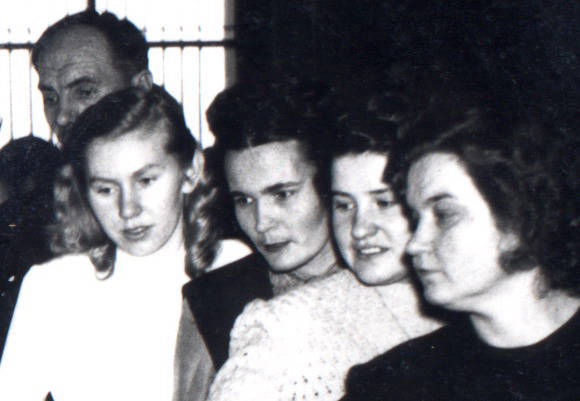 Nelly Hubel (nee Gustavson) in line for food.
Nelly Hubel (nee Gustavson) in line for food.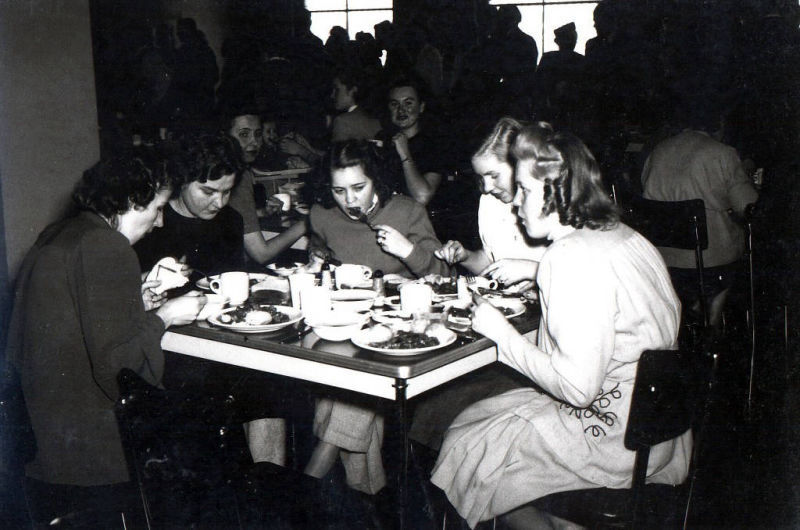 Lunch in refugee camp.
Lunch in refugee camp.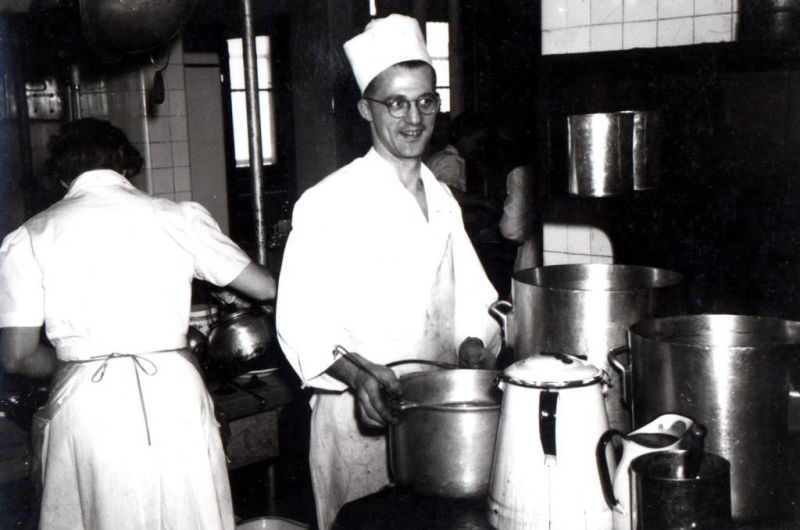 Refugee camp cook.
Refugee camp cook.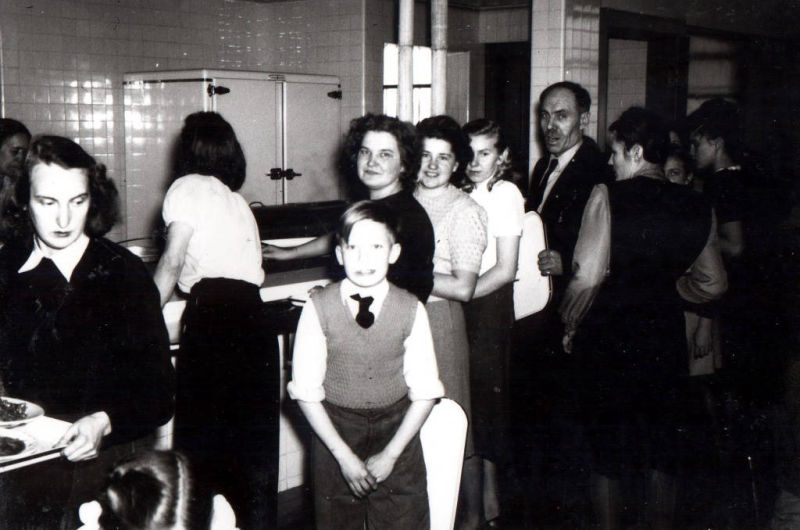 Helping out with meals.
Helping out with meals.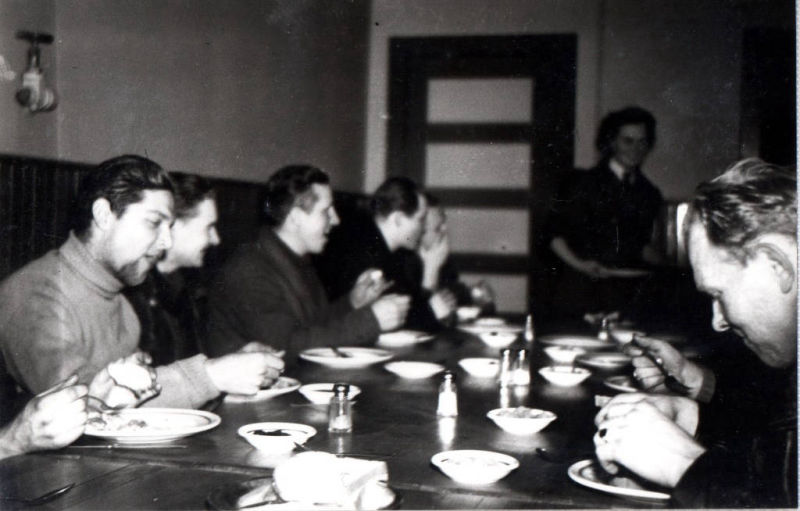 Lunch is served.
Lunch is served.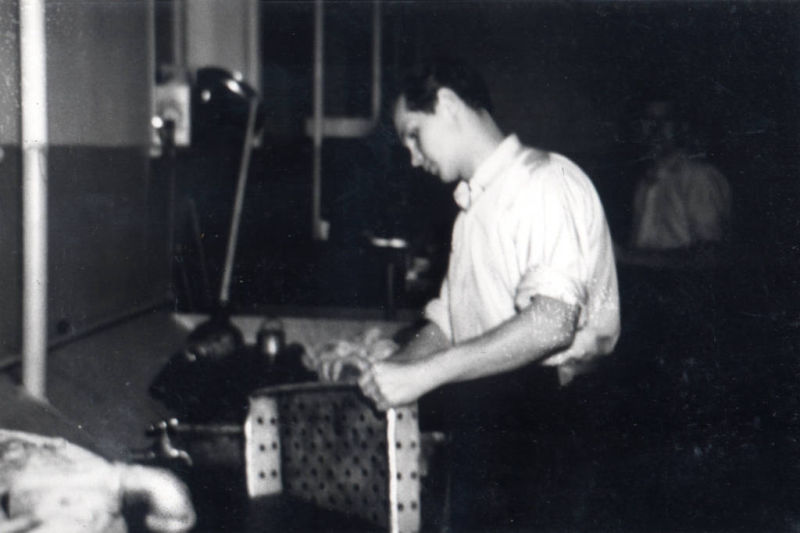 Manivald Sein does the dishes.
Manivald Sein does the dishes.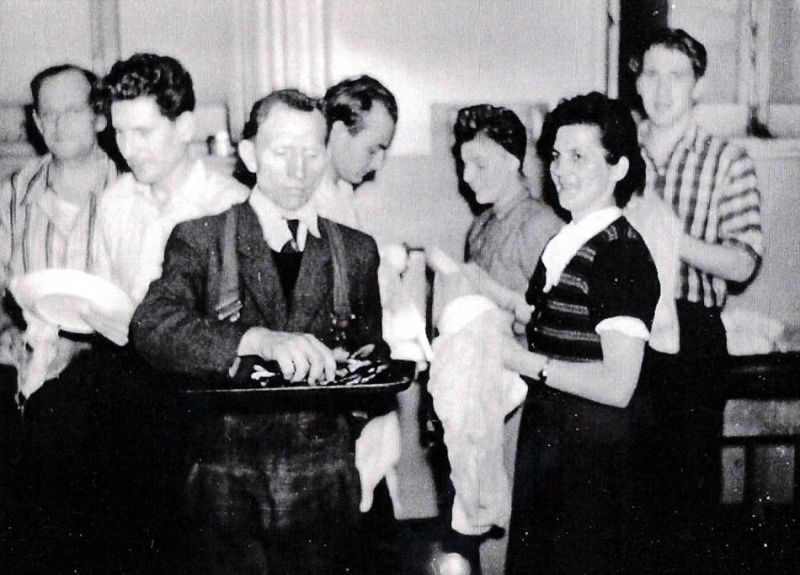 Helping in the kitchen.
Helping in the kitchen.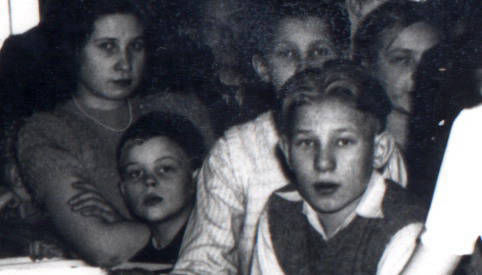 Passengers in Halifax.
Passengers in Halifax.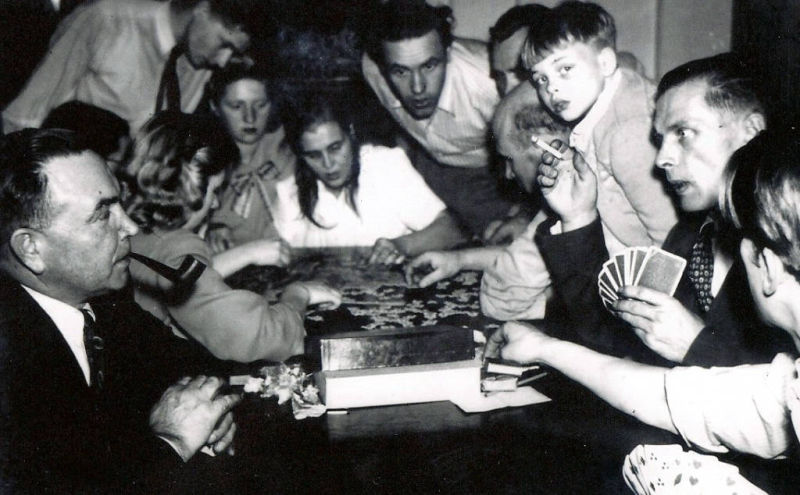 Captain Linde, left, in Halifax.
Captain Linde, left, in Halifax.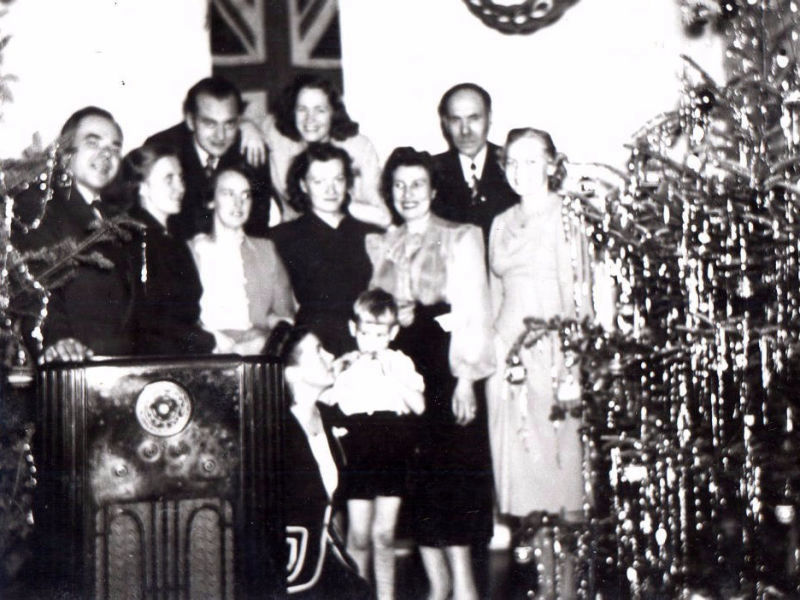 Christmas in refugee camp.
Christmas in refugee camp.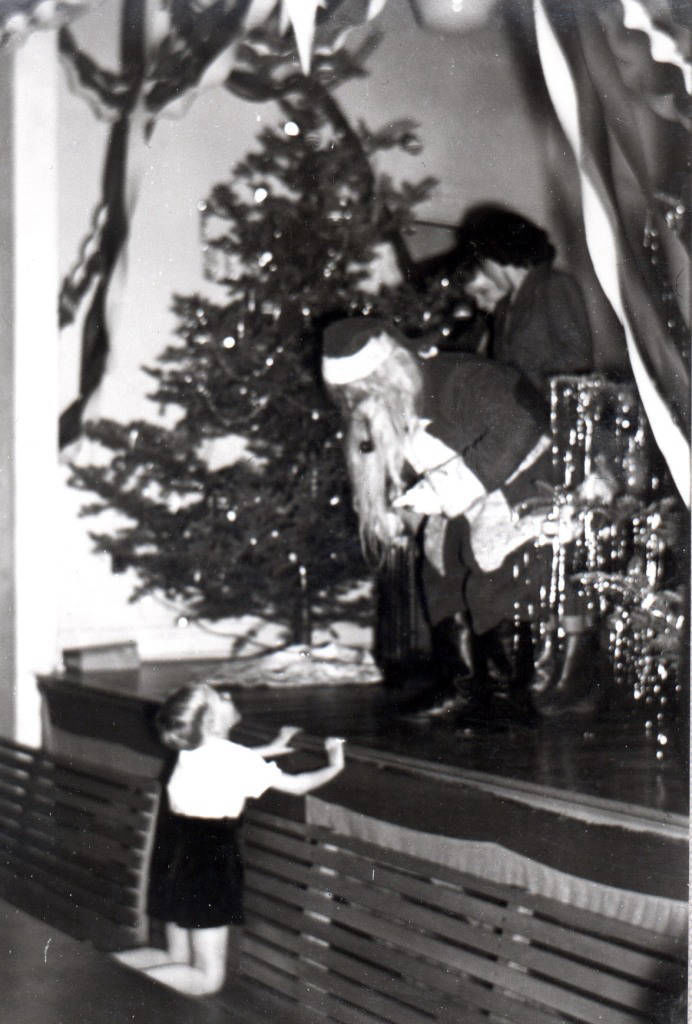 Santa comes visits passengers.
Santa comes visits passengers.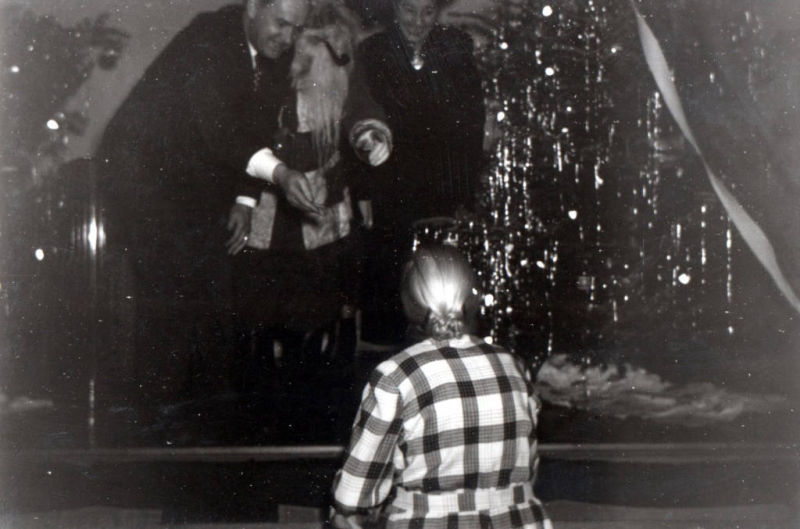 Christmas presents.
Christmas presents.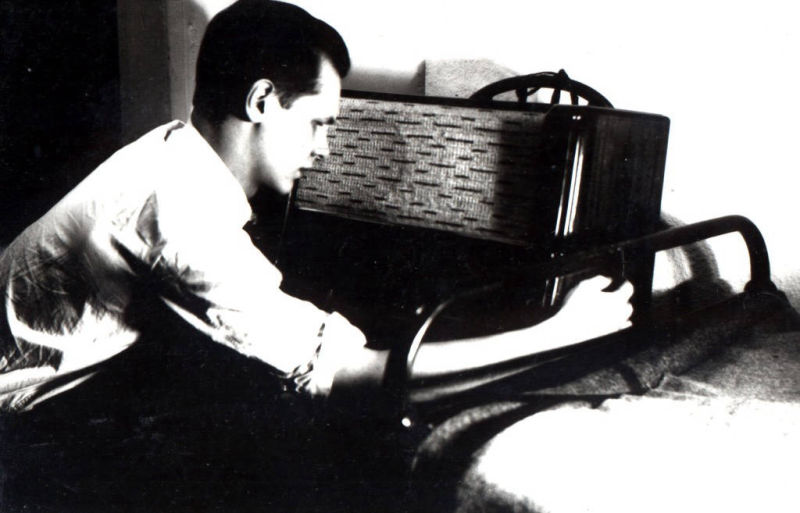 Manivald Sein searches for music.
Manivald Sein searches for music.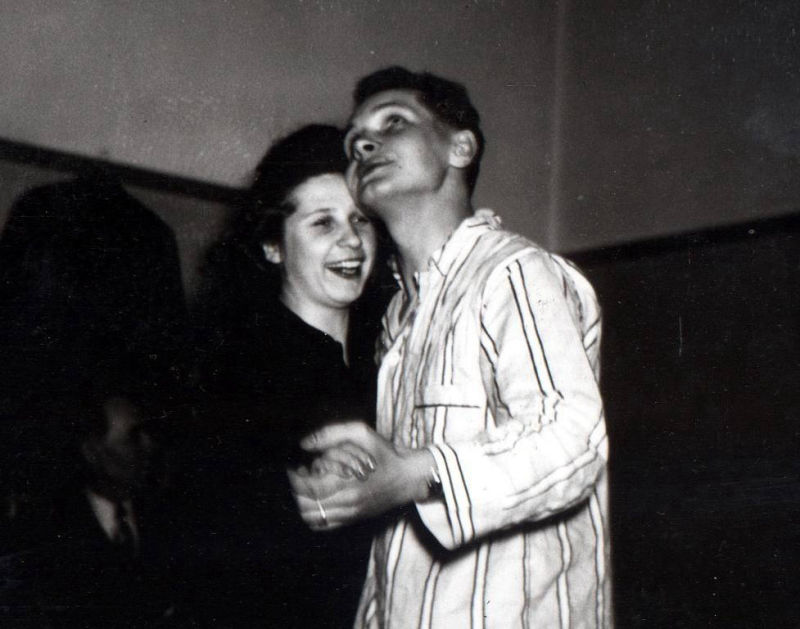 Dancing 1.
Dancing 1.
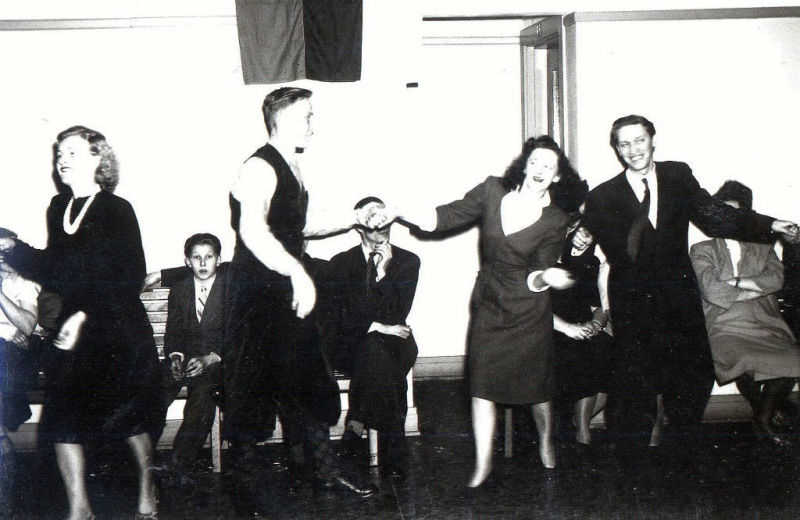 Dancing in Halifax.
Dancing in Halifax.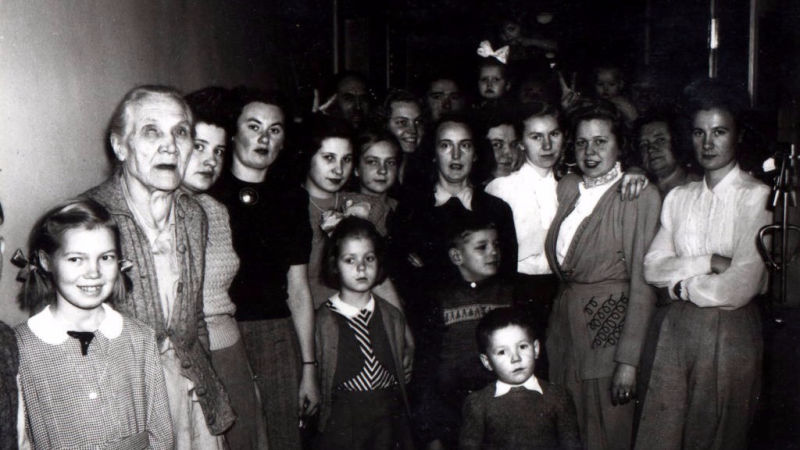 At the refugee camp.
At the refugee camp.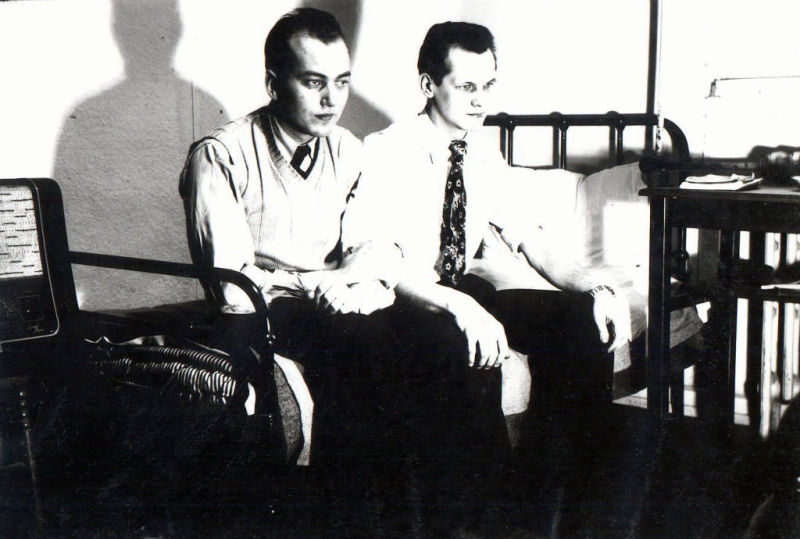 Manfred Kalm & Manivald Sein.
Manfred Kalm & Manivald Sein.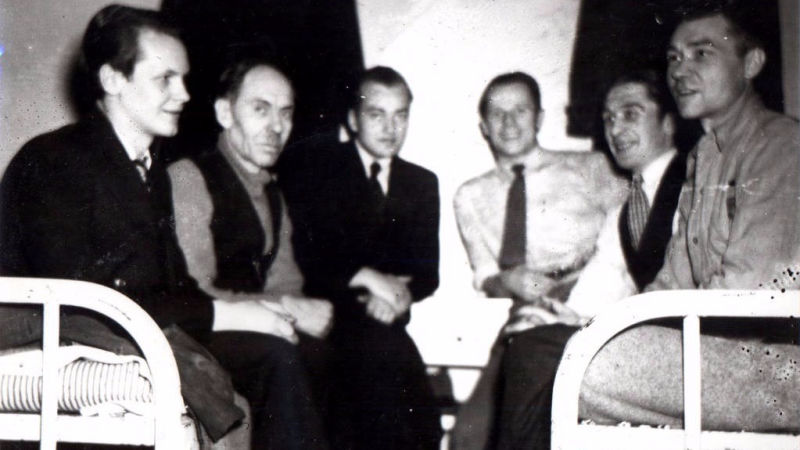 At the refugee camp.
At the refugee camp.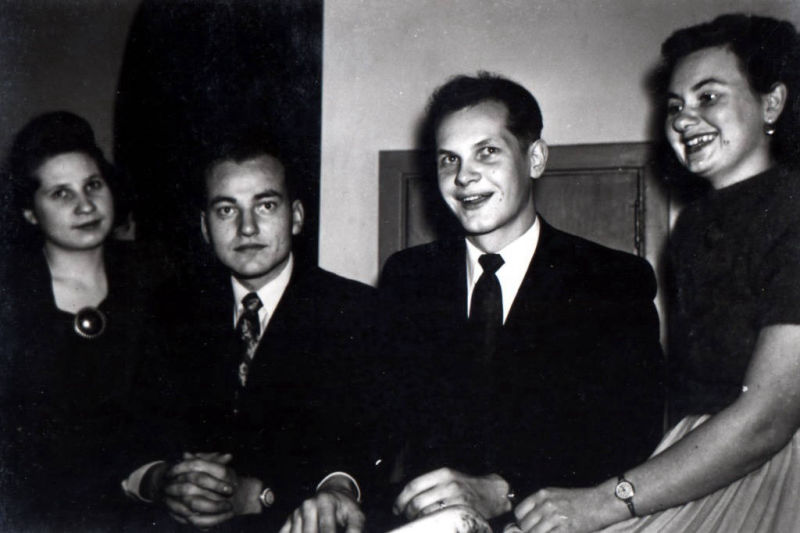 Heljo Vichman, Manfred Kalm, Manivald Sein & ?
Heljo Vichman, Manfred Kalm, Manivald Sein & ?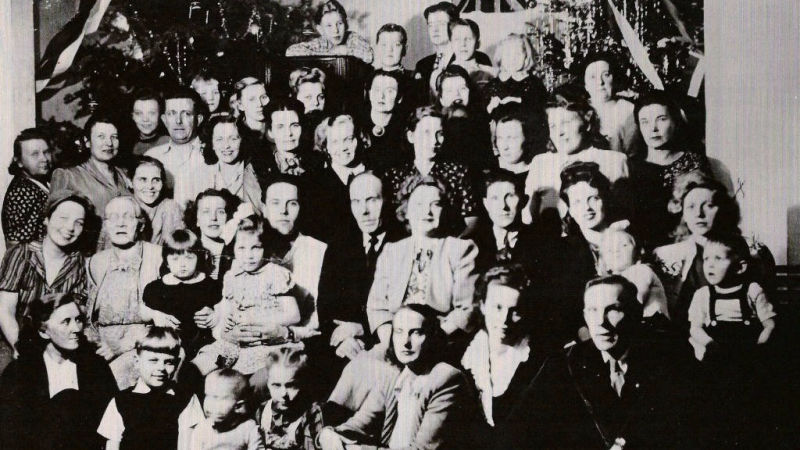 Celebrating Christmas.
Celebrating Christmas.